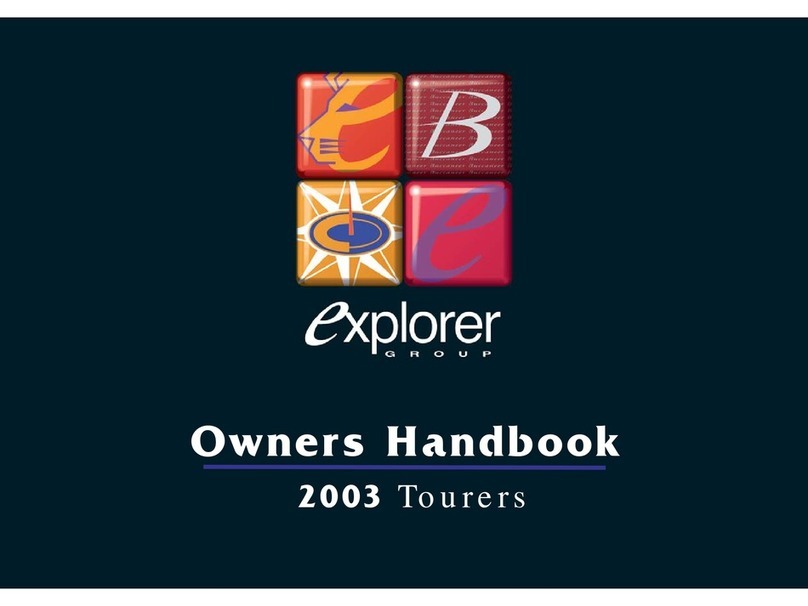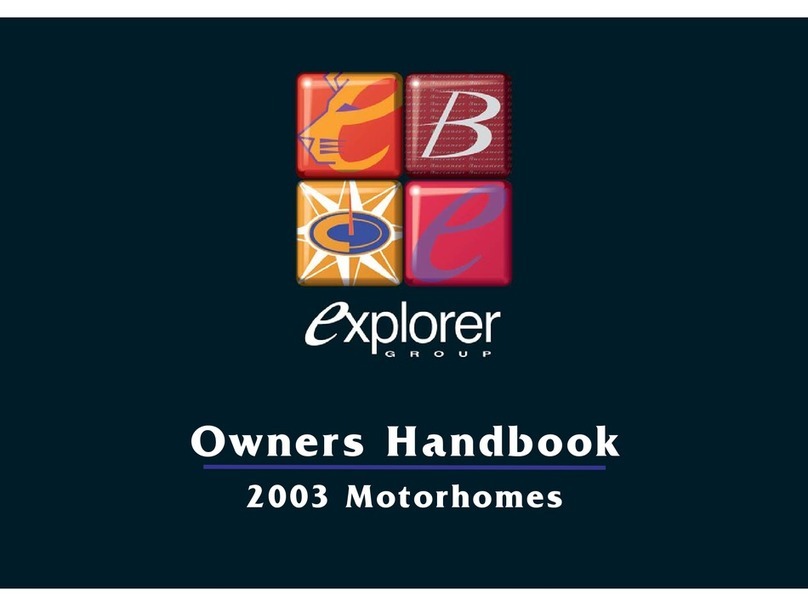In order for you to get the most out of your
new Explorer Group caravan it is
necessary for you to be aware of the
following.
1. Do not obstruct ventilators.
2. Inspect the flexible gas hose regularly
for deterioration and renew as
necessary, with approved type, and in
any case no later than the expiry date
stated on the hose.
3. It is recommended that you provide a
dry powder fire extinguisher
complying with ISO 7165 of at least
1KG capacity by the exit door and a
fire blanket next to the cooker. Ensure
you read the 'advice to occupier label'
fitted to your caravan.
4. Never use portable cooking or heating
equipment inside your caravan. Do
not use your fitted cooking equipment
as heating at any time.
5. Never allow modification to your gas
or electrical system unless qualified
persons carry them out. All
modification to the gas system should
be carried out by a CORGI registered
gas fitter. Any modifications carried
out on the electrical system should be
carried out by an electrician on the roll
of the NICEIC or be a member of the
ECA.
6. Never exceed your caravans
Maximum Technical Permissible
Laden Mass. (see Caravan Towing
Vehicle Weight Ratio page 6)
7. Never exceed the maximum hitch
weight specified for the caravan.
8. If your caravan is fitted with a lift up
bunk it is designed for a maximum
weight of 11 stone and is not suitable
for children under 3 years old without
supervision.
9. Ensure heavy and large items are
secured before towing your new
caravan to reduce the risk of damage
being caused while the caravan is in
motion.
10. Turn off all gas appliances and turn off
the gas supply before towing your
caravan.
11. Do not leave children under 14 years
of age unattended in your caravan.
12. When your caravan is connected to
your towing vehicle it should be level
or slightly nose down. An excessive
nose down attitude or a nose up
attitude could lead to instability when
towing.
13. When your caravan is loaded to its
MTPLM and the weight distributed in
accordance with the towing code,
your caravan is designed to be towed
at a maximum speed of 130kmh /
80mph. However, your attention is
drawn to the fact that in the UK the
maximum speed allowed for towing a
caravan is 100kmh / 60mph.
14. It is illegal to tow your caravan whilst it
is occupied.
15. If your caravan is fitted with a gas
Barbecue point it is not designed to
allow gas flow into your caravan and
should never be used for this purpose.
Important: Your attention is drawn to the
notice affixed in the caravan advising on
fire prevention, ventilation and what to do
in case of fire.
4
General Safety






























